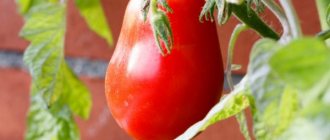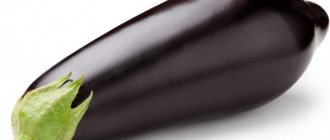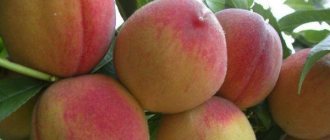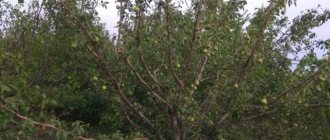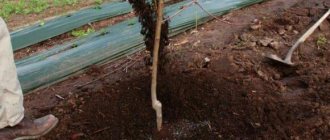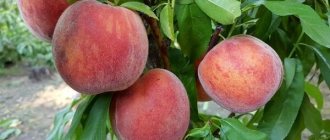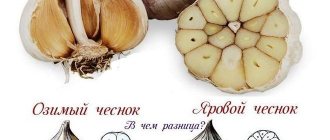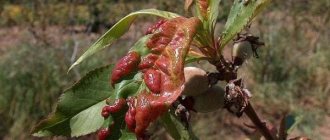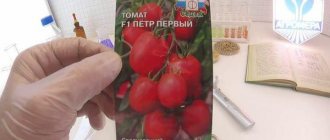Peach Greensboro: description and distinctive features
A mature Greensboro tree has a tall, dense, broad foliage crown with rich green leaf color. The tips of the leaves are slightly curved downwards. The crown size is average.
The tree begins to bear fruit already in the second or third year after planting in a permanent place of growth. From one plant you get a harvest of up to 67 kg of tasty and juicy peaches.
Peach Greensboro - photo
Greensboro buds are also large in size and egg-shaped. The kidneys are usually located in groups. The tree blooms very beautifully with pink flowers and is a worthy decoration of any garden during this period.
The variety is suitable for cultivation even on soils that are unsuitable for it, as it tolerates grafting well to other crops. Among them are cherry plum, apricot, and almond.
Greensboro peaches are a creamy green color. There is a burgundy blush
. The fruit size is average. Weight ranges from 100 to 120 g. The shape of ripe fruits is oval. The sides are slightly flattened.
Peaches have medium firm skin. Inside there is creamy green flesh, juicy and sweet in taste, with a small amount of sourness. The fruit pit is easily separated from the pulp.
Drought and frost hardiness of Greensboro peach
The Greensboro peach crop can withstand temperatures down to 22 degrees below 0
. The variety has already shown excellent survival and adaptability. There are such cases in practice when absolute recovery occurred after freezing and death of the entire part of the plant located above the ground, exposed to temperatures of -35 degrees.
Attention!
When there is a constant subzero temperature, the plant tolerates winter better than in cases of changing weather conditions, including the appearance of thaws. However, the variety is so strong that it continues to bear fruit even after a rapid rise in temperature.
Greensboro peach can be classified as a frost-resistant variety of fruit tree.
It tolerates drought normally if it lasts a short period of time. However, the yield decreases, the leaves fall off, and therefore the plant has difficulties in wintering.
Does the Greensboro peach variety need pollinators?
The Greensboro peach is a self-fertile variety that does not require the presence of other pollinating varieties.
. Therefore, you can make the same type of planting. Placing other varieties nearby will only increase the yield.
Peach Greensboro - video
Greensboro peach variety yield and fruiting
The most productive year is the 10th from the planting period. To date, the highest yield of an adult tree has been recorded - 67 kg.
Ripening time depends on climate conditions. For example, in the south the fruits ripen earlier, in July. In chernozem regions - in early August.
Experts especially highlight the taste and characteristics of the Greensboro peach, giving it 4.8 points on a 5-point scale.
Varieties of fruit trees!
Apricot LEL Amber Necklace Veles Pear
Area of application of fruits
Greensboro is classified as a table or dessert variety.
. Best suited for individual household plots and consumption in unprocessed form. Difficulties arise with transportation over long distances, since the fruits are easily damaged and acquire a dark shade. If there is a need for transportation, Greensboro peaches are harvested at technical ripeness, which is approximately 3-4 days before full ripening. Be sure to place it in a package, placing soft, hygroscopic material between the fruits.
Reviews from gardeners
An excellent variety that tolerates frosty winters well. It depends on what kind, of course. We have frosts down to minus 15, plus or minus. Quite unpretentious, watering is moderate, without excesses. The only thing is that he doesn’t like wet weather with warm nights. Then you have to spray for leaf curl. We usually have this kind of weather in June. Then no problem. Fruits abundantly, you have to prop up the branches.
rokonon, Ukraine
I will get rid of Greensboro and it is very affected by curliness.
Alex75, Kharkov
https://forum.vinograd.info/showthread.php?s=5d40c51bd3804344ed74e3e4a9df1d35&p=27952#post27952
Greensboro and Skazka survived last winter successfully (ttt). They did not insulate it in any way, only the tree trunk circle was thoroughly covered.
celica, Kyiv region.
https://forum.autoua.net/showflat.php?Number=8864754
The Greensboro peach primarily attracts the attention of gardeners in the middle zone, since it is one of the few that has increased winter hardiness. Poor shelf life and transportability make it uninteresting for commercial use, but for on-site consumption it is a win-win option.
Advantages and disadvantages of the variety
Over the entire existence of Greensboro, the main advantages and disadvantages of the variety have been identified.
Advantages:
- rapid fruit ripening;
- excellent resistance to low temperatures;
- high taste quality of Greensboro peaches;
- high immunity to diseases characteristic of the culture.
Flaws:
- different number of fruits on the tree, different weights;
- difficulties in transportation;
- limited areas for cultivation.
The Greensboro variety is intended for cultivation in the south of the country, as well as in the middle zone. Ideal conditions: cool, warm summers and moderate winters.
Is it possible to grow peach in the Moscow region?
Not so long ago, only a few gardeners who loved exotic things were engaged in growing peaches in the Moscow region. Now, with the right selection of varieties, even a novice amateur can get tasty, aromatic and healthy fruits in his summer cottage. What requirements must a peach meet for the Moscow region? What are the best varieties bred for this region?
The plant must be frost-resistant, preferably local selection. It is preferable to choose early fruit ripening dates, but medium ones are also suitable. Foreign seedlings do not acclimatize well in our conditions and often do not survive the harsh winter. In the summer, it often rains in the Moscow region, so the tree must have good resistance to fungal pathogens.
Greensboro peach planting location and timing
A suitable place for planting is an open, well-lit area, free from drafts. The water in the chosen location should not stagnate. The most suitable slope is in the south. The plant is not picky about soil. You can add humus to very heavy soil, and mineral fertilizers to too light soil.
Recommended Planting Dates for Greensboro Peach Trees
Planting dates for Greensboro are:
- In the southern part, September or the first days of October are suitable for planting Greensboro seedlings. In spring, plants tolerate heat very poorly. Sunburn may occur.
- The best time to plant Greensboro peach trees in the midlands is either fall or spring. The most important criterion is that the soil is warmed up to 15 degrees above 0.
- In the north, it is recommended to plant Greensboro peach trees only in the spring, when the soil temperature is comfortable for the plant. In areas where there are very harsh winters and insufficient snow, peaches must be covered for the winter.
Selection of seedlings
It is recommended to buy Greensboro peach seedlings in specialized departments.
When purchasing, you should carefully inspect the plant for damage.
Pay attention to the following indicators:
- height (from 1 to 1.5 meters);
- age (not older than 2 years);
- trunk thickness (about 2 cm).
The bark should be smooth and free of spots, and the root system should be free of damage and signs of disease or pest damage.
Preparing the site for planting Greensboro peach
Experienced gardeners recommend preparing a hole for planting peach tree seedlings six months before the planned planting
. The size of the planting hole is 40 x 40 cm. It is necessary to maintain a distance between seedlings of at least 3 meters. Peach culture does not like thickening. A larger distance of 4 to 5 meters is left between the rows.
Step-by-Step Process for Planting Greensboro Peach Trees
The process of planting Greensboro seedlings occurs in several stages:
- A stake is placed in the center of the planting hole, which will become a support for the young plant, protecting it from breakage in the event of strong winds or from damage by animals.
- The bottom of the pit is lined with drainage. Crushed stone or ordinary river sand will do. The layer thickness is at least 10 cm.
- A mound of fertile soil is made around the support.
- The seedling is placed in the hole in such a way that the support casts a shadow on the bush during sunlight during the daytime.
- The root system is carefully distributed over the earthen mound, after which a small amount of soil is sprinkled on top.
- After planting, the Greensboro peach seedling is immediately watered with warm water. One plant requires approximately 10 liters of water. After moisture is absorbed, the hole is completely filled with soil.
As for the presence of pollinator trees, they are optional
, since Greensboro is a self-fertile variety. Incorporating other peach varieties may increase yield slightly.
Peach growing technology
Features of cultivation
The Greensboro peach is a typical Southern crop not suited to cold climates. However, among many other varieties, it is distinguished by its ability to bear fruit in the conditions of the Moscow region, but in this case it requires serious preparation for winter.
In the south, trees are planted throughout September, since spring planting is fraught with the death of seedlings from the early onset of intense heat. In the center of the Russian Federation, and even more so to the north, spring planting is more reliable (when the soil warms up to 15 o C), since peaches planted in the fall may not tolerate frost. Peaches should be planted in the sunniest place, but protected from the winds, preferably on a south-facing slope. In any case, places where stagnation of snow or rainwater is possible are unsuitable.
Greensboro Peach Care
Greensboro is an easy-to-care variety. But to get a good harvest, you still need to make a little effort. Basic care for a Greensboro peach consists of watering, pruning, crown formation, and fertilizing.
. In addition, you need to know how to properly prepare plants for wintering.
How to properly water peach trees
The Greensboro variety requires systematic watering. For proper rooting, the soil is moistened so that water penetrates to a depth inside the soil of 25 to 45 cm, covering the entire root system.
How to plant a peach correctly
In the first 30 days after planting, young peach plants are watered a couple of times every 7 days. Each tree requires at least 10 liters of water. When there is a drought and no rain is expected, water more often - up to 3 times a week. Increase the amount of water from 10 to 15 - 20 liters. An adult plant requires deep moisture every 10 days. Water is poured into a circle near the trunk.
Attention!
When the entire crop has been harvested, it is not recommended to water any more. This will reduce unnecessary growth of new branches and prepare the tree for winter, increasing its level of resistance to low temperatures.
Greensboro peach: pruning and crown shaping
Each year, the Greensboro peach is pruned to form a crown
. Dried branches and damaged shoots must be removed. Additionally, the crown is thinned out and shaped based on its condition.
In the first year of planting, the main shoot is pruned, leaving 65 cm above the soil surface.
. In summer, new branches are formed. Of these, select from 4 to 5 shoots located no closer than 15 cm from each other. It is they who will subsequently perform the function of the skeleton.
Peach pruning
The tops of the shoots are removed. Over the next 3 years, shoots are shortened by a third
. Between branches of the 2nd order leave a distance of 35 - 40 cm from each other. Subsequent pruning is carried out depending on the location of the buds. If the buds are close together, severe pruning is done. When placing buds only at the edges, only damaged, dry branches and those without fruits are removed.
Important!
For pruning use: pruning shears, scissors. The tool must be well sharpened in order to prune correctly without causing harm to the plant. It is advisable to disinfect instruments before use. For example, a 3% solution of Bordeaux mixture. The sections are treated with garden varnish.
Peach Greensboro: fertilizing
Greensboro peach feeding is carried out according to a seasonal schedule, three times per season, in the following order:
- Fertilizer is applied for the first time when the buds are swelling. Use either urea or nitrophoska. Take 35 grams of the selected fertilizer per tree.
- The second time, fertilizer containing phosphorus and potassium is applied to the peach trees. Feeding time is mid-summer.
- The third and last time during the season, organic matter is added in the fall, preferably in September. Manure is used as fertilizer. For young plants, rotted manure is used so as not to burn the delicate root system. For adults, you can use fresh.
Important!
When feeding Greensboro peach organically, it is worthwhile to mulch at the same time. Peat and compost are used as materials. This will also prepare the crop for the winter.
How and with what to fertilize fruit trees correctly
Preparing Greensboro Peach Trees for Winter
Here's how to prepare Greensboro for winter:
- carefully dig up the soil around the tree trunk (this can help eliminate parasites if they are present);
- in September they do pruning (see above for how to prune);
- in the period from late October to early November, watering is gradually reduced;
- branches and trunk are treated with pest repellents;
- whitewash the lower part of the trunk, including skeletal branches;
- the circumference of the trunk is insulated with straw;
- the covering material is carefully fixed, covering the top with either paper or burlap.
Forum statistics
207033 Messages in 1634 Topics from 5593 Users. Latest user: Amaya Latest message: “Ripening dates are different...” ( Today at 00:37:47 ) Latest messages on the forum.
Now on the forum
58 Guests, 7 Users
Users in the last 15 minutes: Marshall, Elvira2017, Eugene, zsb, leonidych, vladimirM, yotmast [Blocked] [Section Moderator] [Forum Moderator]
Maximum online today: 77 . All-time maximum online: 2758 (28 July 2021, 17:22:51)
Users who visited the forum in the last 24 hours
Total: 298
(Visible: 297, Hidden: 1) 1963, Marshall, Elvira2017, Eugene, zsb, leonidych, vladimirM, yotmast, mers, Serg1707, SNovichek, hanter64, znakomij, Alexander K, Vardan, Sergey Fer, Anatoly Sivkov, Alexey V, Ilya 77, Andrey Gladilin, Tatyana A., Belgorodets, in Astrakhan, Oksana Kopp, Tatyana B, sem_en, Alex65, Vladimir 153, skier, Igor Viktorovich, slavalimon, Alexander Vl., Primorets, OlgaOs, SANYCH, 31rus, mystic69, DorontsovPeter, Andrey Tsvetkov, Buba, Cherkessk, igor222, Andrey76, Elena Z, vlad51, Kenig, Nikolay Rex, Sergey 1965, Vladimir Buturlakin, DSW, psv1960, Dmitry 77, Vasily V., Vyacheslav03, Natalia Nikolaevna, Sergey Tashchiyan, Nikolay S., Igor Sergeevich, alexsandr, kvg, Pioneer, Polyanina Ekaterina, nicson7, Elena Aleshchenko, Alexander-ask-34, Verona, Igor F., Taker, Tikhii, Henry, Yuri72, L.A.P., Gaivoronsky Yuri, Sergeevich, Sergey Purekhokletov, Svetlana Streletskaya, Galinka, Aleksey Deminov, Naumov Igor, Vyacheslav136, gloomy, Katrin, Andsanych, Mikhno Alexander, Grandfather31, Filippov Oleg, Vladimir ++, Svetla777, Mikhail Alekseevich, Lidia58, Mikhail77, Alexander Bryansky, VLADIMIR-KANEVSKAYA, DIL , Amber7394, Marina Protasova, TITOVA LYUBOV, Linx, alexander66, Natalya M, Mikhail Fesenko, ElenkaF, Amaya, Alexander71, Boris 1952, tsv, Maximilian, 25nata35, nadia, GALINA ANOKHINA, Igor_K, Alexander Kolesnikov, Ivan Levin, Pitko, weather forecaster , eSAa, cecet71, atseton, Alexander Smirnov, Vladimir Kostochkin, Vladimir Berdnikov, Gocha, pioneer-2, LeXa_KoT, Sergey 61, Sergey Yuryev, Erem, alexss, Evgeniy52, Skif, lomakin1969, Vladimir Kovba, dayton, Yuri Semyonov, N. A. Sokolov, Pavlentiy, Sa-shura, Volgogradka, Dmitry Anatolyevich, Grandfather Igor, Andrey Lis, Bublichenko Alexander M, Marina Krymskaya, stenlly2010, irahelm, Vyacheslav Vladimirovich, Vladimir Shilov, Aprel, Dmitry Badaev, gheo55, Yura, y_fed, rambo , Yagodka, Valentina Ivanovna, Kryn, oleg9f, DED2, Svetlana Korotina, Oleg Ivanovich delivered, Eduard., santra, L2k2m7n, Alexander48, Viknik, Andrey 31, m2d, Valery Rastorguev, Soshnin Yura, Amateur gardener, Galina, Vasily1111, gardener , marlin64, Salex, sergei, Sergey Ko, Ramiz, victor_, kosmos, potap05, Yuri 36, VitalySD, Inna161, Vova Kapran, Vladimir Shcherbinin, Valerie, niy1, cfibr, Andrey68, kulol3, Slavka, thanatos, Serzh1978, Realist, Artur53 , max2008-01, LOZA, AlexanderD, Grandfather Young, Natasha, Zayac, ketch, Rita, alx-74, Iv Iv, Alexander150, Igor K, Vasily Viktorovich, VeraNiK, kdm57, Veniaminovich, Boris Sokolyansky, therapist, Capricorn, 77volt, , vikbublik, neposny, Evgen, Victoria Aleksandrovna, Serezha 64, Wintel, Airbone, teri, Sergey Lomonosov, Khramov, serginio, Leonty Yarygin, Irina O., Ser, Nadezhda Grig, Lyubov S., netolya, Saisan, Alexey Agryzkov, Vadi , Zinaida, Vadim, Alexander Taganrog, Sukhononov Sergey, Snezhinets, Evgen_26, NAU_63, Masha_Sadovod, Gennady163, Krasnovlad1, Alexander Zinoviev, Vasily 53, Roman Fedorovich, Tis, Aleksey Sergeevich, Arnya, Zheka, Nurtas, Kradievska, 64nikolay64, Nick04, NickK 41, Liza , Valentina Medvedeva, Sergey43, Andrey S., Nikolay Lipunov, Mst, Vertuoz2, Vladimir VS, NatalyaMed, freesia, Kinna, Mikhail Michurinsk, alekcsan1, VALERY TAMB, Sasha57, MikhAf, Y_Azer, Andrey Beribesov, hunter1955, nut lover, Keys, Ivan Shmelev, Pestik, anton_slash, Nadymchanka, Sergey 31, Volgar, Pavel 64, Tatyana Volzh, Elektronik_t, Alexander 61, spotlight, Alexander Gai, Cheprak, Pirko Alexander, vladimirvrn, Antrikan, asun16, Alexey Viktorovich
Diseases and pests of peach trees
Greensboro has good immunity.
However, there are pests and diseases that are most common on the Greensboro peach:
- Leaf curl
leads to damage to the shoots and the appearance of purple leaves. This plant does not bear fruit. To eliminate the disease, treatment with preparations containing copper (Chorus, Hom, Skor) is required. - Moniliosis
is a fungal disease that damages branches, flowers, and leaves. Brown spots appear on the affected parts of plants, and fruits become deformed. The affected parts are immediately eliminated. Before flowering, the tree is treated with Horus, and after the growing season, Topaz is used. - Their pests are dangerous aphids
, which feed on the sap of the plant, after which the plant begins to dry out. When there are few pests, they can be dealt with manually by simply crushing them. When their quantity is significant, chemicals are used. - The eastern codling moth
is another pest. There are young shoots and small ovaries. At the same time, it is a carrier of diseases caused by fungi. They need to be eliminated immediately. The drugs Rovikurt and Benzophosphate are suitable. - The fruit moth
attacks the buds and shoots, causing the plant to lose leaves and reduce productivity. Chlorophos and Karbofos help in the fight.
Harvest and storage
Harvesting is done manually in two to three stages. Since the variety is not stored for a long time and it is problematic to transport it over long distances, this is taken into account when harvesting. Fruits intended for transportation are harvested when they are almost ripe.
Peaches should be firm, fresh and undamaged. The fruits are placed in boxes, placing soft material between them or wrapping them in newsprint.
Storage requires a room with high humidity and zero temperature.
